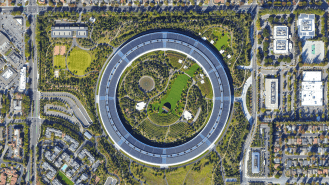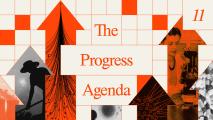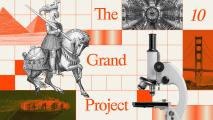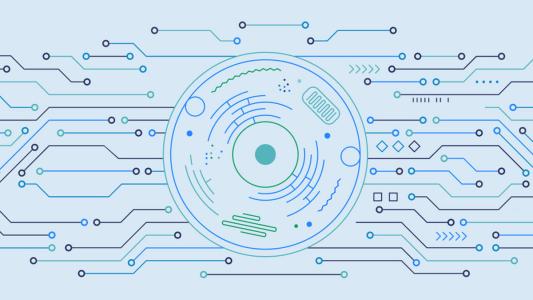The world needs a new way forward into the AI Age, one that makes the most of this world-historic, general-purpose technology and ensures it works for everyone on the planet over the course of the 21st century.
America needs a new grand mission, one that unites Red and Blue regions, urban and rural areas, working and elite people and gets the country back on track doing what it does best: inventing the future and leading the way forward.
We can meet both of these needs at once: All the key pieces are now in place to catalyze an explosion of AI innovation in America. It is the place best positioned to design and build the first economy and society that makes the most of intelligent machines in service — first and foremost, always and everywhere — to the well-being of all human beings.
This essay is going to sketch out in broad strokes the case for starting this mission as fast as possible. The speed is warranted because this technology is going to scale faster than any previous general-purpose technology with the potential to fundamentally change the world.
America is primed for a fundamental reinvention.
I’ve spent 30 years in Silicon Valley and the tech and innovation economy of the San Francisco Bay Area, and I can tell you that we have never seen such a transformative technology move so fast. We won’t need to spend decades building out the infrastructure for AI, like we had to for the internet or electricity. We’ve been building the digital infrastructure that was needed to culminate in AI over the course of the last 40 years. We’re now heading into explosive change.
Speed is also warranted because America is currently unmoored and adrift with no such historic purpose.
The political coalition in control of the federal government is looking backwards to a time long past and unrecoverable. On the right side of the political spectrum, President Donald Trump and MAGA are trying to make America great again through a revival of 20th-century manufacturing and carbon-based industries, plus tariffs that last worked more than a century ago.
The political coalition on the left side of the spectrum is mostly looking backwards, too — its eyes are on old models from America’s last heyday, when we last had a mission to build the post-war world. They act as though the New Deal, Great Society, and Pax Americana were the crowning achievements of American ingenuity and can never be surpassed.
But America is primed for a fundamental reinvention. We’ve seen it happen in three previous eras that occur on an uncanny cycle of every 80 years. I’ve laid out how this works in a documentary-style video with Freethink Media that went viral in the last month with close to one million views — it is embedded below and well worth the watch.
The short version is that America has gone through three reinventions that come every 80 years and last for 25 years: The American Revolution kicked off the first one in 1785, the Civil War started the second one in 1865, and World War II marked the third one in 1945. We’re now entering America’s fourth reinvention — 80 years later — in 2025.
The cycles are not magically triggered, but rooted in the arrival of game-changing, general-purpose technologies that help drive high rates of economic growth and the spread of new wealth and prosperity. They also coincide with the alignment of four archetypal American generations that are particularly well suited to drive widespread innovation. (If you want a deeper dive on the details of how this works, see my prior essays on the four reinventions and the 80-year pattern.)
The point here is that America once again finds itself grappling with the arrival of game-changing, general-purpose technologies — primarily AI, but also clean energies and bioengineering. These new technologies hold the potential for vast economic growth, leading to new wealth and prosperity. We are also entering the window of 25 years with the generations aligned in a way that is optimal for innovation.
Meanwhile, the world is similarly unmoored and adrift. The old geopolitical configurations of the 20th century, like the Cold War, are long past, and the last era of globalization is discredited and out-of-date, with the rise of China as a new superpower.
The world is also primed to be reconfigured around new systems that are much better suited to deal with new collective challenges that are also on fast-paced timelines, like climate change.
America needs to be the driving force behind figuring out the new way forward.
The missing piece right now is a clear understanding of the new way forward: How do we use intelligent machines to reinvent the economy in ways that work better for everyone and create an abundant society where all people can thrive? How do we fully harness clean energy technologies to stop global warming? How do we bioengineer living things in order to create sustainable systems that can work on this small planet for the long haul?
The purpose of my Substack essay series “The Great Progression: 2025 to 2050” is to rough out some of the concepts for how America and the world could actually pull that off in the next 25 years. I will then lay out the vision more fully in a new book of the same name, which will be published by HarperCollins to start 2027.
This essay is going to make the case that America needs to be the driving force behind figuring out that new way forward. Not the America of Trump. The America that’s about to transform itself over the next 25 years. Hear me out.
Where do you want the world of AI to be invented?
Let’s take the perspective of a neutral observer on Earth who understands that humans have now arrived at the point in their history where they are crossing the threshold into the Age of AI.
From now on, and for centuries into the future, humans will work alongside machines that can think — both in ways humans can and cannot.
These intelligent machines will augment humans and give them superpowers that will dramatically expand their abilities. They will make individual humans more productive, more innovative, and more dangerous, too.
These intelligent machines will be able to do many things that, up until now, only humans could do. They will replace people on tedious or dangerous tasks and dramatically expand the workforce, helping humans collectively accomplish much more.
They will be able to do things that most humans couldn’t do before, too, like have instant recall of pretty much all the facts in all fields and spot patterns in vast amounts of data.
And increasingly, these intelligent machines will embody robotic bodies that allow them to navigate the world and physically interact with us.
A different kind of civilization is going to come out of this transformation in the coming decades.
This is a huge moment in the history of humans. You could argue that this is the biggest step-change in our technological capabilities ever.
We are living in a moment in human history that will be remembered as long as humans exist — centuries, millennia from now.
That neutral observer would rightly think that the arrival of artificial intelligence is going to fundamentally change how human systems work going forward. It’s going to change how the economy works, how society works. It’s going to change how education works, how healthcare works, how government works — you name it.
The truth is that what comes out of this transformation in the coming decades is going to be a different kind of civilization. As crazy as it sounds, that’s the level of reinvention we are heading into.
So, how are humans going to figure this all out? Where in the world are we going to find people with the inventiveness, the innovative prowess, to figure out the new way forward into the AI Age? Who is going to be best positioned to take the lead?
The neutral observer would quickly say that we’re not going to figure this out by some global committee that takes into account the viewpoints of everyone on the planet — those generally move at a glacial pace, and the AI transformation is coming fast.
America can and will rise to the occasion again.
The Europeans were the last cultural region to invent a new form of civilization, but that was during The Enlightenment, more than 250 years ago. They did a damn good job, and our world of today is still working on their operating system of industrial production, financial capitalism, nation states, and the like.
But the Europe of today is, in many ways, a region run by committee and living largely off the past. Europe has not been very innovative for quite a while, and has produced none of the 21st century’s leading tech companies, and so has very little understanding of AI. It won’t be able to take the lead.
China has built a thriving technology sector in the 21st century and is now the world leader in clean energies and modern manufacturing. It also has kept pace with the general thrust of artificial intelligence.
The case against China taking the lead is that the country is still tightly controlled by the Communist Party and is, at best, an autocracy under the control of one supreme leader and, at worst, a totalitarian state.
The world of artificial intelligence that China will build in the coming years will almost certainly be designed to enhance centralized control by an all-powerful government. Once that kind of AI integrates into a surveillance state, course correcting will be extremely difficult, so you probably don’t want China to lead the way forward.
America’s new mission isn’t just to invent the new technology of AI. It must invent the systems that then make the most of AI.
Then there’s America, specifically the United States. America is still a relatively open, pluralistic, democratic, free society that can course correct over time. Trump’s America has disappointed and frightened much of the world, and frankly, half of the American people. But I have argued in previous essays that Trump is best understood as the wrecking ball of the American model of the last century, a symptom of that old system going through its death throes.
To be sure, America has many flaws, but also many strengths relative to the rest of the world. It led the world through the last big juncture in human history coming off of World War II 80 years ago. Armed with a wave of new general-purpose technologies, it invented economic and social systems that spread wealth and prosperity throughout not just the U.S., but other countries around the world, too.
America has a proven track record, to be sure, but could America rise to the occasion again? I’m arguing it can and will, and the advance teams are actually already on the case — in California.
The reinvention of America has already begun
America is a very big, very diverse place. The eyes of the world, and of most of America, are now focused on Washington, D.C., watching the Trump show make war on the American governing model of the last 80 years, while trying to install a governing model from the 19th century. That show is engrossing, but mired in the past.
If you want to understand where America is going in the future, shift your gaze to the West Coast and focus on what’s happening in San Francisco. There is no city on the planet that is remotely close to having such a robust collection of brains working on all aspects of artificial intelligence.
The San Francisco Bay Area is home to nearly all the people and organizations on the leading edge of AI. Some people are wary of these trillion-dollar Big Tech companies and multi-billion dollar startups, but, to their credit, these companies invested in AI research and development when national governments did not. They gathered the leading researchers from all over the world into super high-performing teams over the last 15 years. These organizations should be seen as valuable assets at this juncture, a great place to start.
The Bay Area is a magnet for young innovators and entrepreneurs, too — college kids from leading universities across the globe are relocating to San Francisco to create startups that can fill out all the new needs in the emerging AI ecosystem.
The region has also attracted many of the top academics, intellectuals, and thought leaders trying to reason through all the implications of this looming technological change as quickly as possible.
America’s new mission isn’t just to invent the new technology of AI. It must invent the systems that then make the most of AI. How do businesses and industries get rebuilt from the ground up around AI? How do fields like education, healthcare, and government do the same?
AI is going to serve up opportunities for every kind of entrepreneur out there.
This kind of widespread innovation is not confined to the tech center of San Francisco, or even the state of California, as important as those places will continue to be. This kind of innovation off the core technology can happen throughout America, and many parts of the nation are already starting to lay the groundwork for participating in the AI game.
Americans in general are good with innovation, risk-taking, and tinkering with new technologies. AI is going to serve up opportunities for every kind of entrepreneur out there.
Here’s what I think has a good chance of happening in the next couple years: AI is going to start having a big impact on the economic status quo as many existing businesses are forced to adapt fast to a wave of AI-first startups.
Knowledge workers — typically college-educated people from the middle and upper-middle classes — will be most affected. Young people coming out of college will be particularly susceptible to disruption, as they generally enter the workforce doing the more tedious, low-level knowledge work — the kinds of tasks that AI will automate first.
The disruption of the work and lives of the middle and upper-middle class will accelerate the calls for businesses and governments to quickly do something big, unlike what happened when globalization disrupted the work and lives of the working classes 25 years ago. Like it or not, people in these upper classes have more money, access to power, influence over media, and other assets to drive change in ways that working classes in dying towns in the heartland did not.
We need to fundamentally rethink how everyone can benefit from the incredible wealth that will be generated by AI.
Given the speed of the changes, American politics will have no choice but to adapt much quicker to this economic disruption than any other in the past. This almost certainly will start to play out in the next presidential cycle, which begins in early 2027 and will be particularly open, with all the old Boomer politicians like Trump finally out of the game in both parties. This will be a very rare presidential contest — a wide range of truly transformative options will be fiercely debated with the fate of the country seemingly in the balance.
Added to all this domestic drama will be the sense that America needs to rise to the occasion to deal with the rise of China — particularly for the critical next decade when the foundations of the world of AI will be built, for better or worse, for people around the world.
This is where America’s next great mission kicks in. We need to devise and roll out new economic models that harness AI in ways that ensure everyone can make the transition from the old economy to the new one.
We need to fundamentally rethink how the incredible wealth that will be generated by AI can be shared through all the ranks of workers in the companies making this transition, as well as throughout society so that everyone can benefit.
Many of the other institutions that make a full life will need to be reinvented in the light of AI, too. How are we going to educate children and young people for a world of intelligent machines? How are we going to fully take advantage of AI to solve diseases, improve health, and extend life?
America needs to create a model of how a relatively free, open, pluralistic democracy harnesses AI for the good of all.
Ensuring that all Americans can thrive in a world of powerful and ubiquitous AI will almost certainly require letting go of the various policy playbooks and ideologies of the 20th century and trying out very different strategies.
Through this process of reinvention, I expect that a 60% majority of Americans will eventually come together behind a new way forward — like Americans have always done in the three previous periods of reinvention described above. The new way forward that this new majority supports will take 25 years to complete — just like the new ways forward supported by the American majorities that came together after 1945, 1865, and 1785 took 25 years to complete.
The new 60% majority will come together from Red and Blue states, from cities and rural areas, from working and elite classes to invent the next iteration of America that keeps raising the bar. This America will work better for all Americans than the current one and will be seen over time as great progress.
This is not a prediction. This is a challenge to Americans today to wake up to what’s coming and start gearing up for the country’s fourth reinvention.
America needs to create a model of how a relatively free, open, pluralistic democracy harnesses AI for the good of all so that other societies around the world can work off it, too.
America’s next great mission is about to begin.
We’d love to hear from you! If you have a comment about this article or if you have a tip for a future Freethink story, please email us at [email protected].






